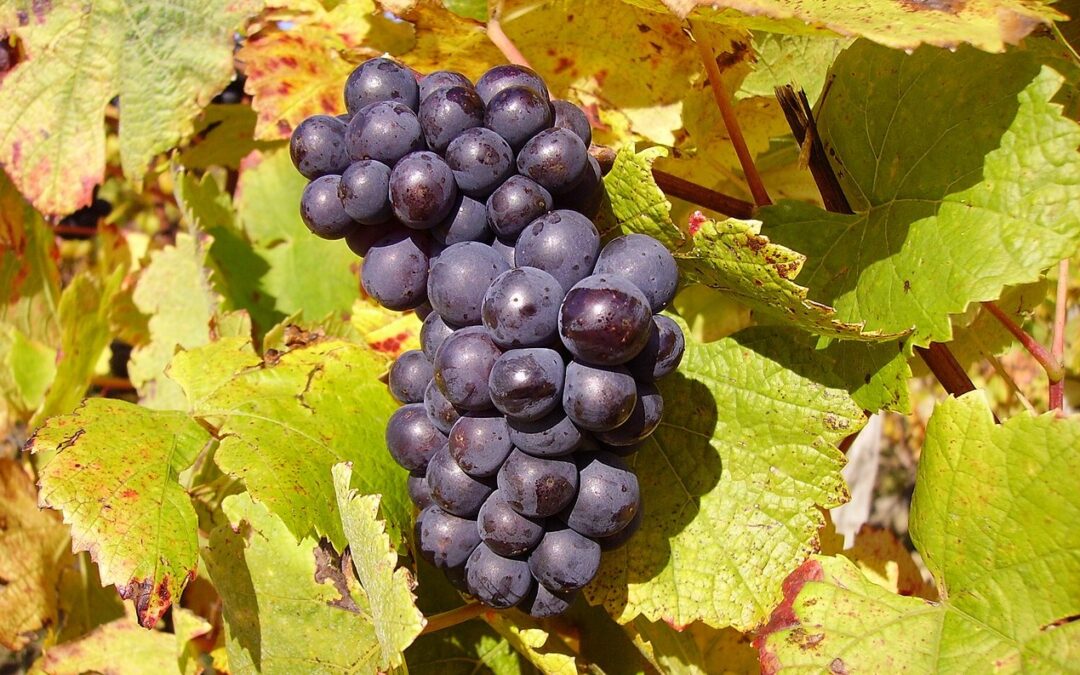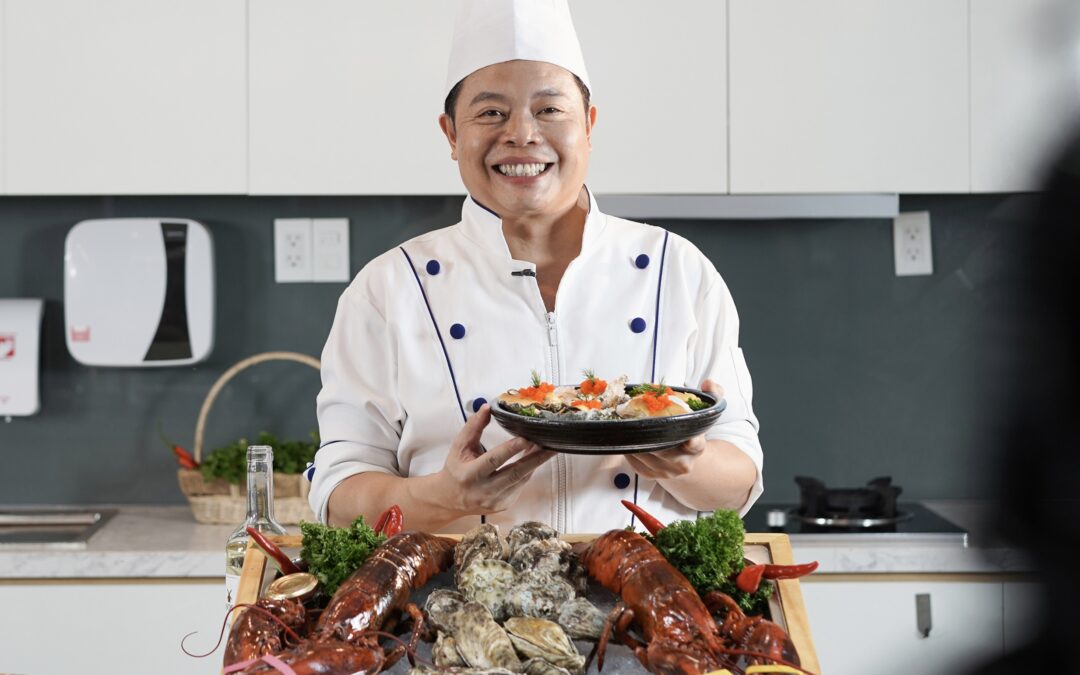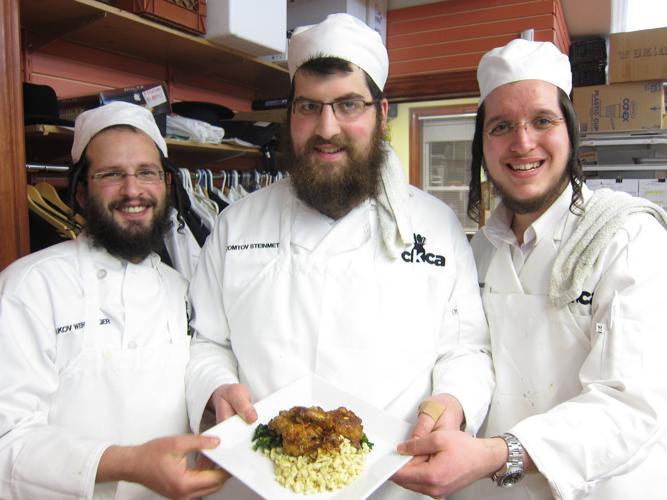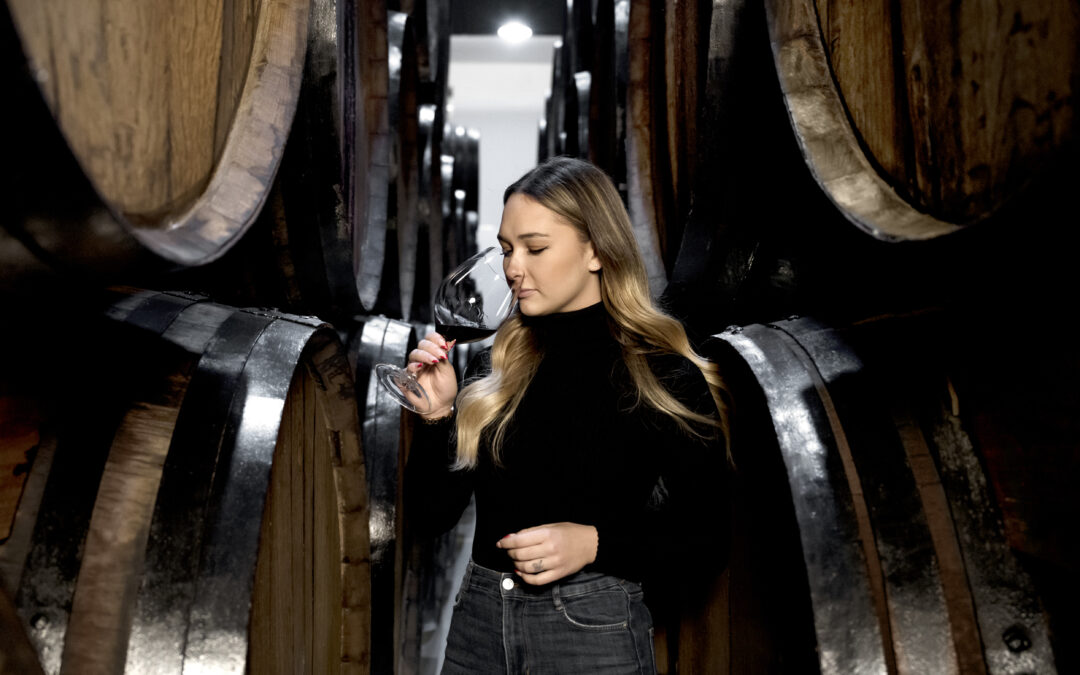
by Ross Kingsley | Mar 30, 2025 | DECODING GRAPES: FROM VINES TO VINTAGE
Pinot Noir, often dubbed the “heartbreak grape,” is as temperamental as it is revered. Known for producing some of the world’s most elegant and complex wines, this thin-skinned varietal has captivated winemakers and enthusiasts for centuries. Let’s dive into its origins, history, iconic wines, and global influence.
Origins and History
Pinot Noir has a storied history rooted in the vineyards of Burgundy, France. The grape’s name translates to “black pine” in French, referencing its dark color and tightly clustered, pinecone-shaped bunches. Evidence of its cultivation dates back over 1,000 years, making it one of the oldest grape varieties still in use today.
Its lineage is impressive; Pinot Noir is a parent grape to many well-known varieties, including Pinot Gris and Pinot Blanc. The varietal’s connection to Burgundy is profound, with this French region being the benchmark for Pinot Noir production. Monastic winemakers in the Middle Ages were among the first to document and refine its cultivation, understanding the profound impact of terroir on its expression.
Famous Wines Using Pinot Noir
When it comes to iconic wines, Burgundy’s red wines, particularly from appellations like Romanée-Conti and Chambertin, are the pinnacle of Pinot Noir. These wines are celebrated for their complexity, balance, and ability to age gracefully for decades.
Pinot Noir is also a key component in Champagne. Alongside Chardonnay and Pinot Meunier, it adds body and structure to the world’s most famous sparkling wines. In the New World, regions like Oregon’s Willamette Valley and California’s Sonoma Coast have gained recognition for producing outstanding examples that highlight the grape’s versatility.
Geographical Reach
Though Burgundy remains its spiritual home, Pinot Noir has found success worldwide. Cool-climate regions are its preferred territory, as the grape’s delicate nature thrives in moderate conditions. Outside France, it’s grown extensively in the United States, New Zealand, Germany, and Chile. Each region brings its unique fingerprint, from the bright red fruit and earthy tones of Oregon’s expressions to the silky, fruit-forward styles of Central Otago in New Zealand.
Why Pinot Noir Stands Out
Pinot Noir’s allure lies in its ability to reflect the nuances of its environment. It’s a grape that demands attention, patience, and skill from the vineyard to the bottle. For wine lovers, it offers a journey through its subtle complexity and an opportunity to taste the story of a region, a vintage, and a winemaker’s vision.
Image Credit: Wikipedia.org
_ _ _
© CHURRASCO PHUKET STEAKHOUSE / ALL RIGHTS RESERVED
Reprinting, reposting & sharing allowed, in exchange for a backlink and credits
Churrasco Phuket Steakhouse serves affordable Wagyu and Black Angus steaks and burgers. We are open daily from 12noon to 11pm at Jungceylon Shopping Center in Patong / Phuket.
We are family-friendly and offer free parking and Wi-Fi for guests. See our menus, reserve your table, find our location, and check all reviews here:
https://ChurrascoPhuket.com/
#Churrascophuket #jungceylon #phuketsteakhouse #affordablewagyu #wagyu

by Ross Kingsley | Mar 30, 2025 | BLACK BOX: RANTS, RAVES, REVIEWS & RECIPES
Born Lý Vinh Viễn in 1970 in Saigon (now Ho Chi Minh City), Chef Jack Lee is a Vietnamese-American celebrity chef, renowned for his innovative fusion cuisine and charismatic presence – both in the United States and Vietnam. His journey is a testament to resilience, passion, focus, and an unyielding spirit.
Early Life and Refugee Experience
Growing up in the bustling Cholon district of Saigon, Lee was immersed in the rich culinary traditions of his Chinese-Vietnamese heritage. However, the aftermath of the Vietnam War brought significant challenges. At the age of 10, Lee and his family fled Vietnam as part of the “boat people,” enduring perilous conditions at sea before being rescued by a Norwegian freighter and eventually resettling in California. This harrowing experience of displacement and survival profoundly influenced his perspective on life and food.
Culinary Aspirations and Professional Development
In the United States, Lee faced the challenges common to many immigrants, including cultural assimilation and language barriers. He learned English by watching the television show “Three’s Company,” identifying with the character Jack Tripper, a chef played by John Ritter. This connection not only helped him adapt to his new environment but also inspired his chosen English name and career path.
Determined to pursue his passion for cooking, Lee enrolled in the California School of Culinary Arts under the Le Cordon Bleu program. His dedication led him to a voluntary position at the prestigious Hotel Bel-Air in Los Angeles, where he started as an unpaid intern working 16-hour days. His relentless work ethic paid off as he climbed the ranks to become the banquet chef, honing his skills in French-Californian cuisine under the mentorship of Chef Humberto Contreras.
Rise to Fame: Chef to the Stars
Lee’s unique fusion of Asian flavors with Western culinary techniques quickly garnered attention. He founded Chinoise Cuisine, a catering company that served high-profile events, including the Oscars and Golden Globes. His clientele featured A-list celebrities such as Angelina Jolie, Michael Jackson, and Steve Jobs, earning him the moniker “Chef to the Stars.” One of his notable creations during this period was the “$100 Egg Roll,” a luxurious twist on the traditional Vietnamese snack, incorporating premium ingredients like Maine lobster tail, Alaskan king crab, Sevruga caviar, and gold leaf, accompanied by a raspberry and Sauvignon Blanc reduction dipping sauce.
Challenges and Resilience
Despite his success, Lee faced significant personal challenges. He underwent surgery that resulted in the temporary loss of his sense of taste—a devastating setback for any chef. This period of adversity tested his resilience, but Lee’s passion for cooking and determination to overcome obstacles saw him through this challenging time.
Return to Vietnam and Television Career
In recent years, Lee returned to Vietnam, where he became a prominent figure in the culinary scene. He served as a judge on “Junior MasterChef Vietnam” and appeared on various Vietnamese cooking shows, including “Món Ăn Của Ngôi Sao” and “Thiên Đường Ẩm Thực.” His engaging personality and expertise endeared him to Vietnamese audiences, further solidifying his status as a culinary celebrity.
Role as Judge on Iron Chef Vietnam
Lee’s reputation culminated in his role as a judge on “Iron Chef Vietnam,” where he evaluated the culinary creations of competing chefs. His participation in such a prestigious program underscored his influence and authority in the culinary world, both in Vietnam and internationally.
Recent Professional Endeavors in the USA
After his impactful stint in Vietnam, Lee returned to the United States, where he continues to share his culinary talents. He has taken on roles as a show chef at various casinos across the country, bringing his unique fusion cuisine to a diverse audience. His ability to blend Asian flavors with Western techniques continues to captivate diners and showcases his versatility as a chef.
Nicknames and Public Persona
Throughout his career, Lee has been affectionately known by several nicknames, including “Mr. Ready,” reflecting his dynamic and ever-prepared approach to cooking and life. His vibrant personality, combined with his culinary expertise, has made him a beloved figure among peers and fans alike.
Philosophy and Legacy
Lee’s culinary philosophy centers on creating awe-inspiring experiences that bring people together to appreciate and enjoy food. He views his diverse cultural background as a rich tapestry that informs his cooking style, allowing him to craft dishes that resonate on multiple levels. His journey from a refugee to a celebrated chef serves as an inspiring narrative of resilience, adaptability, and the unifying power of food.
Conclusion
Chef Jack Lee’s story is one of remarkable transformation and achievement. From his challenging beginnings as a refugee to his ascent as a culinary star, Lee exemplifies how passion, hard work, and an unwavering spirit can overcome adversity. His contributions to the culinary world, both in the United States and Vietnam, have left an indelible mark, inspiring future generations of chefs and food enthusiasts worldwide.
Image Credit: https://www.chefjacklee.com/
_ _ _
© CHURRASCO PHUKET STEAKHOUSE / ALL RIGHTS RESERVED
Reprinting, reposting & sharing allowed, in exchange for a backlink and credits
Churrasco Phuket Steakhouse serves affordable Wagyu and Black Angus steaks and burgers. We are open daily from 12noon to 11pm at Jungceylon Shopping Center in Patong / Phuket.
We are family-friendly and offer free parking and Wi-Fi for guests. See our menus, reserve your table, find our location, and check all guest reviews here:
https://ChurrascoPhuket.com/
#Churrascophuket #jungceylon #phuketsteakhouse #affordablewagyu #wagyu

by Ross Kingsley | Mar 23, 2025 | RESTAURANT BUSINESS: BEHIND THE KITCHEN DOOR
The restaurant industry is a high-stakes, fast-paced environment that demands resilience, endurance, and an unwavering ability to perform under pressure. Behind the scenes, chefs, servers, and managers operate in a world where long hours, physical exhaustion, and emotional strain are part of the daily routine. While the culinary world is often romanticized, the reality is that mental health struggles are rampant but still rarely addressed and remedied.
The Perpetual Circle
The biggest challenge restaurant workers face is stress. The pressure to meet customer expectations, deliver food quickly, and maintain quality can be relentless, especially during peak hours. The high-energy nature of service can create an adrenaline-fueled rush, but over time, it takes a toll. Many workers find themselves constantly on edge, dealing with anxiety that doesn’t dissipate even after their shifts end.
Compounding this stress is the unpredictability of schedules. Unlike traditional nine-to-five jobs, restaurant employees often work erratic hours, sometimes clocking in for grueling 12- to 14-hour shifts. Late nights are the norm, and the lack of a consistent routine disrupts sleep patterns, making rest and recovery difficult.
Financial insecurity further exacerbates mental health issues. Many restaurant workers rely on tips, leading to inconsistent income that fluctuates based on the generosity of patrons. For those in seasonal positions, job stability is another looming concern. This financial instability creates a constant undercurrent of stress, forcing workers to take on additional shifts or second jobs, leaving even less time for self-care.
Can’t Stand The Heat?
The workplace culture in many kitchens also contributes to the mental health crisis. The industry has long been associated with a tough, sometimes toxic, environment where verbal abuse, harsh criticism, and intense pressure are considered part of the job. Mistakes can lead to aggressive reprimands, fostering fear and anxiety among employees. In some cases, this culture extends to substance abuse, as many workers turn to alcohol or drugs as a way to cope with the relentless demands of the job. Post-shift drinking is deeply ingrained in restaurant life, creating an unhealthy cycle where employees self-medicate to unwind, only to face the same stressors the next day.
Recognizing the Signs
Recognizing the warning signs of mental health struggles is essential, both for individuals and their coworkers. Changes in behavior, such as increased irritability, frequent fatigue, or a noticeable lack of motivation, can indicate that someone is struggling. Many workers withdraw socially, avoiding interactions with colleagues or losing interest in things they once enjoyed.
Some experience difficulty concentrating, leading to more frequent mistakes, while others become dependent on alcohol or drugs to manage stress. In severe cases, absenteeism or erratic behavior may be evident, signaling a deeper issue. By identifying these signs early, restaurant workers and managers can take steps to prevent the situation from worsening.
Remedies and Treatments
Addressing these challenges requires a combination of individual and structural solutions. Therapy and counseling can provide valuable coping mechanisms, helping workers manage stress and anxiety in healthier ways. Prioritizing work-life balance, even in an industry known for its demanding hours, is crucial. Ensuring that employees take breaks, get adequate rest, and have designated days off can prevent burnout.
Physical health also plays a key role, as proper nutrition, hydration, and regular exercise contribute to overall mental well-being. Restaurants can help by offering balanced staff meals and fostering an environment that discourages excessive drinking. Support groups specifically designed for hospitality workers provide a space to share experiences, reduce isolation, and build a sense of community.
For those struggling with substance abuse, seeking professional help and reducing reliance on alcohol as a coping mechanism can make a significant difference. Some restaurants have begun offering alternatives to traditional post-shift drinks, such as alcohol-free gatherings or mental health check-ins after busy shifts.
Mitigation Strategies for Restaurant Owners and Managers
Restaurant owners and managers have a responsibility to create a healthier work environment. Fostering a culture that supports mental health starts with normalizing open discussions about stress and well-being. Employees should feel safe discussing their struggles without fear of judgment or job loss.
Training leadership to recognize signs of distress and providing access to mental health resources, such as employee assistance programs, can make a significant difference. Flexible scheduling, when possible, can also reduce employee stress, allowing workers to maintain a healthier work-life balance. Fair compensation and reasonable break times are not just ethical necessities but also key factors in reducing burnout and turnover.
Leading by example is one of the most effective ways to shift workplace culture. When restaurant leaders prioritize their own mental health—whether through taking breaks, maintaining balance, or seeking help when needed—it sets a tone that encourages employees to do the same.
Conclusion
Mental health issues in the restaurant industry are ingrained, but it is not without solutions. By fostering a supportive environment, addressing the root causes of stress, and providing resources for employees to seek help, the industry can move toward a healthier, more sustainable future. A thriving restaurant is built not just on great food and service but on the well-being of the people who make it all happen.
Image Credit: https://pikwizard.com/photo/stressed-young-chef-in-kitchen-taking-a-moment-of-frustration
_ _ _
© CHURRASCO PHUKET STEAKHOUSE / ALL RIGHTS RESERVED
Reprinting, reposting & sharing allowed, in exchange for a backlink and credits
Churrasco Phuket Steakhouse serves affordable Wagyu and Black Angus steaks and burgers. We are open daily from 12noon to 11pm at Jungceylon Shopping Center in Patong / Phuket.
We are family-friendly and offer free parking and Wi-Fi for guests. See our menus, reserve your table, find our location, and check all guest reviews here:
https://ChurrascoPhuket.com/
#Churrascophuket #jungceylon #phuketsteakhouse #affordablewagyu #wagyu

by Ross Kingsley | Mar 23, 2025 | KNOWLEDGE: MEAT ESSENTIALS
Origins and Historical Significance
Kosher beef is a fundamental part of Jewish dietary laws, known as kashrut, which date back thousands of years. The concept of kosher food is rooted in the Torah, specifically in the books of Leviticus and Deuteronomy. These ancient texts outline which animals can be consumed, how they must be slaughtered, and the handling process that follows.
In Jewish tradition, dietary laws serve both spiritual and practical purposes. While religious reasons are primary, some scholars suggest that these regulations also promoted hygiene and food safety in ancient times. Over the centuries, kosher practices have remained largely unchanged, reflecting deep cultural and religious significance.
Regulations and Restrictions
For beef to be considered kosher, it must meet specific requirements at every stage, from selection to preparation:
-
Permitted Animals: Only ruminant animals with split hooves, such as cattle, sheep, and goats, are kosher. Pigs, for example, are not allowed because they do not chew cud.
-
Ritual Slaughter (Shechita): The animal must be slaughtered by a trained Jewish butcher (shochet) using a sharp, smooth knife to ensure a quick and humane process. The method is intended to minimize pain and ensure a clean cut.
-
Blood Removal: Blood is considered unkosher, so it must be fully drained or removed by salting and soaking the meat.
-
Forbidden Parts: Certain parts of the animal, such as the sciatic nerve and specific fats, are not kosher and must be carefully removed.
After slaughter, the meat undergoes inspection to ensure the animal was healthy and free of disease. If any major defects are found, the meat is deemed non-kosher.
Kosher vs. Halal: Key Differences
While both kosher and halal dietary laws originate from religious texts and involve strict slaughter regulations, they have notable differences:
-
Religious Context: Kosher follows Jewish dietary laws from the Torah, while halal follows Islamic dietary laws from the Quran.
-
Slaughter Process: In both traditions, the animal must be slaughtered with a single cut to the throat, but in halal, a prayer to Allah is required before slaughter. Kosher does not require a verbal blessing for each animal but emphasizes the shochet’s religious training.
-
Blood Removal: Kosher meat undergoes additional soaking and salting to remove all traces of blood, whereas halal meat does not require this extra step.
-
Permitted Cuts: Some cuts of beef, particularly from the hindquarters, are not considered kosher due to the prohibition of the sciatic nerve, while halal has no such restriction.
Modern-Day Kosher Beef
Today, kosher beef is available in many countries, catering to both Jewish communities and consumers who seek specific preparation methods. Certification agencies oversee kosher meat production to ensure compliance with religious guidelines. While maintaining ancient traditions, kosher beef continues to be a significant part of Jewish dietary culture.
Can Jews Eat Halal, and Can Muslims Eat Kosher?
Jewish dietary laws require strict adherence to kosher guidelines, meaning observant Jews cannot eat halal meat unless it also meets kosher standards. Since halal slaughter does not include the kosher requirement of removing certain forbidden fats and the sciatic nerve, as well as the salting process to remove blood, halal meat is generally not considered kosher.
For Muslims, the situation is more flexible. Some Islamic scholars permit the consumption of kosher meat because it meets many of the same principles as halal, including slaughter by a monotheistic believer and humane killing practices. However, some Muslims avoid kosher meat because Jewish butchers do not recite the name of Allah during slaughter. The acceptance of kosher meat as halal depends on individual interpretation and sectarian beliefs within Islam.
Conclusion
In a world where food production is increasingly industrialized, kosher beef remains a testament to the importance of cultural identity and ethical consumption. While modern dietary trends emphasize sustainability and transparency, kosher practices have long upheld strict standards regarding humane treatment, cleanliness, and food purity. Though fewer people follow religious dietary laws strictly, kosher beef continues to connect Jewish communities to their heritage. In an era of evolving food choices, preserving these traditions remains a meaningful way to honor cultural roots and shared identity.
Image Credit: https://www.jewishaz.com/
_ _ _
© CHURRASCO PHUKET STEAKHOUSE / ALL RIGHTS RESERVED
Reprinting, reposting & sharing allowed, in exchange for a backlink and credits
Churrasco Phuket Steakhouse serves affordable Wagyu and Black Angus steaks and burgers. We are open daily from 12noon to 11pm at Jungceylon Shopping Center in Patong / Phuket.
We are family-friendly and offer free parking and Wi-Fi for guests. See our menus, reserve your table, find our location, and check all guest reviews here:
https://ChurrascoPhuket.com/
#Churrascophuket #jungceylon #phuketsteakhouse #affordablewagyu #wagyu

by Ross Kingsley | Mar 23, 2025 | WINES: UNCORKING THE MYSTERY
Wine is more than just a drink; it’s a complex mixture of chemical compounds that define its flavor, aroma, and texture. While its basic ingredients—grapes and yeast—seem simple, the chemistry behind wine is anything but. Let’s break down the key components that make wine such a fascinating beverage.
The Foundation: Water
Water makes up the majority of wine—typically around 85%. This isn’t just any water; it’s infused with natural elements from the grapes, including minerals and organic compounds. The water content plays a crucial role in balancing the wine’s structure and allowing other components to dissolve properly. It also affects the mouthfeel, influencing whether a wine feels light and crisp or full-bodied and rich.
The Kick: Ethanol and Other Alcohols
Ethanol is the primary alcohol in wine, making up about 10-15% of its volume. This is produced during fermentation when yeast converts grape sugars into alcohol and carbon dioxide. Beyond ethanol, trace amounts of other alcohols like methanol, glycerol, and fusel alcohols contribute to the wine’s mouthfeel and complexity. Glycerol, in particular, adds a slight sweetness and viscosity, making wines feel smoother on the palate. Higher alcohol levels can enhance warmth and intensity but can also overwhelm delicate flavors if not well-balanced.
The Essence: Acids
Acidity is one of the defining characteristics of wine, influencing its freshness, balance, and aging potential. The main acids found in wine include:
-
Tartaric Acid – The most dominant acid in wine, giving it stability and structure.
-
Malic Acid – Found in young wines, providing a sharp, green apple-like tartness.
-
Lactic Acid – Created during malolactic fermentation, which softens the wine and adds creamy, buttery notes.
-
Citric Acid – Present in small amounts, enhancing overall brightness.
Acidity not only shapes the flavor but also acts as a natural preservative, preventing spoilage and allowing wines to age gracefully.
The Body: Sugars
While fermentation converts most grape sugars into alcohol, some residual sugar remains. This determines whether a wine is dry, off-dry, or sweet. Even in dry wines, tiny amounts of sugar influence the perception of flavor, enhancing fruitiness and balancing acidity. Late-harvest or fortified wines retain more sugar, making them richer and more dessert-like.
The Aroma: Phenols and Tannins
Phenolic compounds are crucial for a wine’s aroma, color, and texture. The most well-known are tannins, which come from grape skins, seeds, and oak barrels. Tannins create that dry, puckering sensation in red wines and help in aging. Other phenols, such as flavonoids and anthocyanins, contribute to a wine’s color and antioxidant properties. Oak aging introduces additional phenolic compounds like vanillin, which imparts vanilla and spice notes.
The Mystery: Volatile Compounds
Wine’s bouquet comes from hundreds of volatile compounds, including esters, aldehydes, and thiols. These are responsible for fruity, floral, spicy, and even earthy aromas. Some esters develop during fermentation, producing notes of banana, pear, or apple. Thiols, found in Sauvignon Blanc, create intense citrus and passion fruit aromas. With aging, these compounds evolve, leading to secondary aromas like nuts, leather, or tobacco.
Conclusion
Wine is a masterpiece of chemistry, where each component plays a crucial role in shaping the final experience. From water and alcohol to acids and tannins, every element contributes to its flavor, texture, and aroma. Whether you prefer a crisp white, a bold red, or a sweet dessert wine, understanding the chemistry behind wine adds another layer of appreciation to every sip. Next time you pour a glass, take a moment to consider the alchemy at work inside.
Image Credit: https://freepik.com
_ _ _
© CHURRASCO PHUKET STEAKHOUSE / ALL RIGHTS RESERVED
Reprinting, reposting & sharing allowed, in exchange for a backlink and credits
Churrasco Phuket Steakhouse serves affordable Wagyu and Black Angus steaks and burgers. We are open daily from 12noon to 11pm at Jungceylon Shopping Center in Patong / Phuket.
We are family-friendly and offer free parking and Wi-Fi for guests. See our menus, reserve your table, find our location, and check all guest reviews here:
https://ChurrascoPhuket.com/
#Churrascophuket #jungceylon #phuketsteakhouse #affordablewagyu #wagyu





